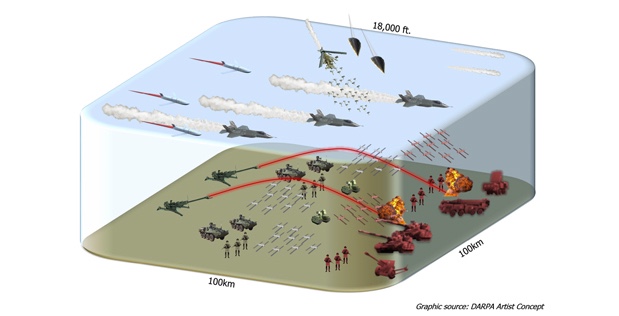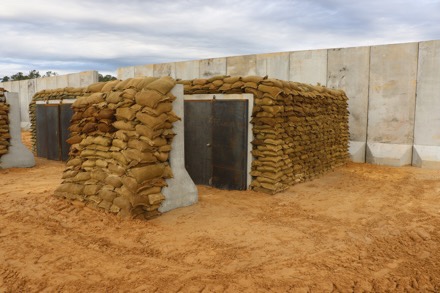Tools enable planes, helos, missiles, uncrewed aircraft to operate simultaneously in contested airspace

DARPA’s Air Space Total Awareness for Rapid Tactical Execution (ASTARTE) program recently demonstrated new automated flightpath-planning software that successfully deconflicted friendly missiles, artillery fire, and manned and unmanned aircraft while avoiding enemy fires in a simulated battle in contested airspace. In a demonstration held at the U.S. Army’s Mission Command Battle Lab, Ft. Leavenworth, Kansas, in late 2022, the ASTARTE software seamlessly integrated with the Army’s Integrated Mission Planning and Airspace Control Tools (IMPACT) software suite. IMPACT is managed by the Aviation Mission Systems and Architecture Project Office in the Program Executive Office for Aviation.
The ASTARTE Program, which began in 2021, is a joint collaboration between DARPA, the Army, and the U.S. Air Force to enable efficient and effective airspace operations and de-confliction in a highly congested anti-access/area denial, known as A2/AD, environment. The program’s goal is to provide an accurate, real-time common operational picture of the airspace over an Army division, enabling long-range fire missions, as well as manned and unmanned aircraft operations, to occur safely in the same airspace.
“The demonstration showed that complex route alternatives could be created in seconds, leveraging available permissive airspace to avoid airspace where conflicts would potentially occur,” said Paul Zablocky, ASTARTE program manager in DARPA’s Strategic Technology Office. “There are many reasons this integration helps the warfighter. Coordinating and consolidating services at the user level greatly reduces procedural burden, which speeds the enterprise. ASTARTE also increases accuracy by automating tasks and reducing inherent human error. Most importantly, the ASTARTE and IMPACT integration forms a foundation of artificial intelligence-enabled services that will interact with other service component AI tools such as the Air Force’s Kessel Run All Domain Operations Suite (KRADOS) for planning and the All Domain Common Platform (ADCP) for operations.”
ASTARTE performer Raytheon Technologies developed an automated flightpath-planning capability for fixed and rotary wing aircraft, which includes the capability to deconflict airspace use by routing through or around defined airspace coordinating measures, commonly called ACMs, in both space and time. General Dynamics Mission Systems (GMDS) developed the Army’s IMPACT suite, which adds a Joint All-Domain Command and Control (JADC2) class of data-enabled, over-the-horizon tools to existing airspace management systems to form a multidomain capability supporting the Army’s 2030 Multi-Domain Operations vision.
During the demonstration, GDMS and Raytheon identified the interfaces allowing the ASTARTE flightpath planner to receive flight path requests with associated constraints from IMPACT (e.g., timing, altitude range, start and end points), and returned complete deconflicted flight paths back to IMPACT on demand.
The ASTARTE-IMPACT demonstration also illustrated a novel approach for transitioning cutting-edge microservices and software components developed by the science and technology community very quickly into military service programs of records.
ASTARTE is currently wrapping up Phase 2 integration efforts and is scheduled to begin Phase 3 live testing this summer.
– DARPA Public Affairs

















































































































